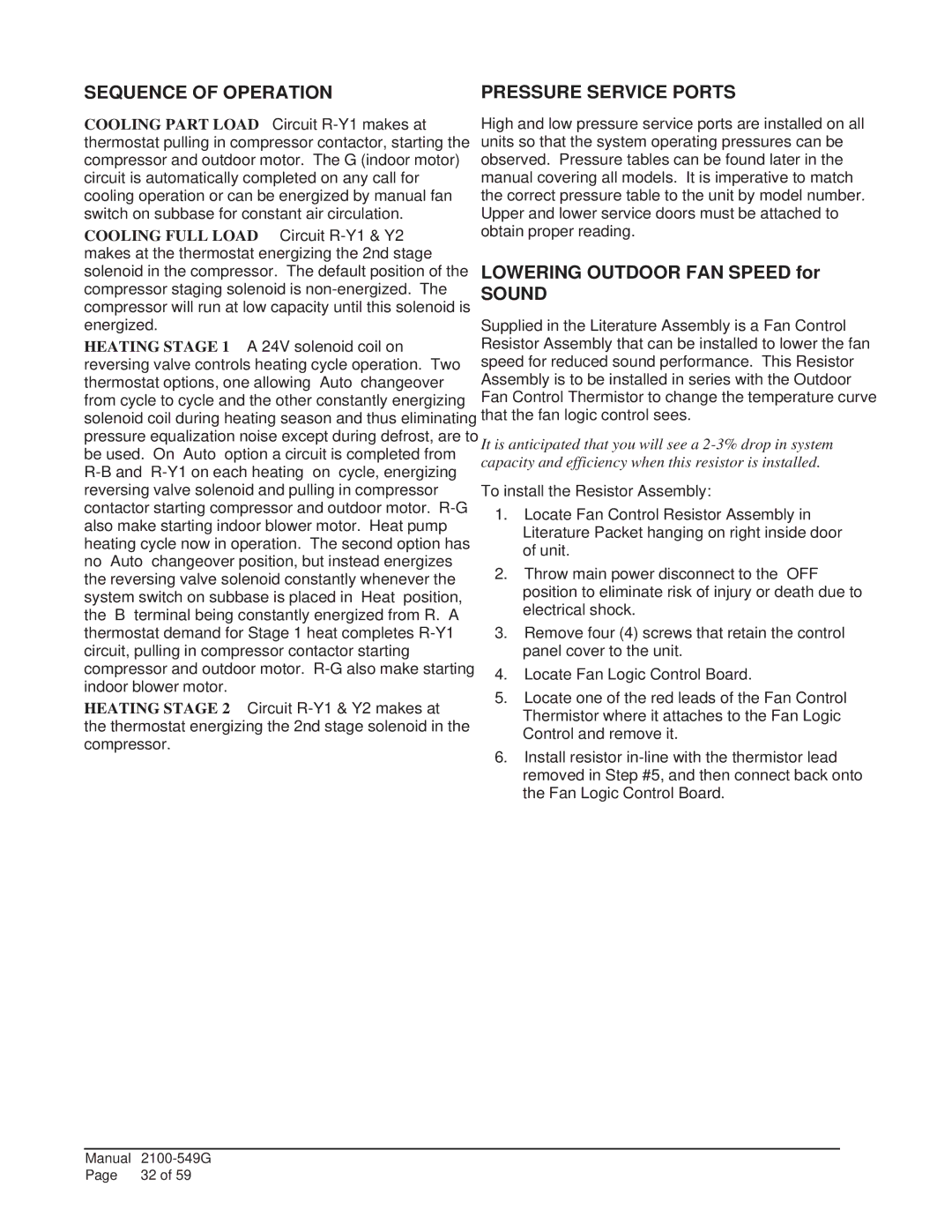SEQUENCE OF OPERATION
COOLING PART LOAD – Circuit
COOLING FULL LOAD – Circuit
HEATING STAGE 1 – A 24V solenoid coil on reversing valve controls heating cycle operation. Two thermostat options, one allowing “Auto” changeover from cycle to cycle and the other constantly energizing solenoid coil during heating season and thus eliminating pressure equalization noise except during defrost, are to be used. On “Auto” option a circuit is completed from
HEATING STAGE 2 – Circuit
PRESSURE SERVICE PORTS
High and low pressure service ports are installed on all units so that the system operating pressures can be observed. Pressure tables can be found later in the manual covering all models. It is imperative to match the correct pressure table to the unit by model number. Upper and lower service doors must be attached to obtain proper reading.
LOWERING OUTDOOR FAN SPEED for
SOUND
Supplied in the Literature Assembly is a Fan Control Resistor Assembly that can be installed to lower the fan speed for reduced sound performance. This Resistor Assembly is to be installed in series with the Outdoor Fan Control Thermistor to change the temperature curve that the fan logic control sees.
It is anticipated that you will see a
To install the Resistor Assembly:
1.Locate Fan Control Resistor Assembly in Literature Packet hanging on right inside door of unit.
2.Throw main power disconnect to the “OFF” position to eliminate risk of injury or death due to electrical shock.
3.Remove four (4) screws that retain the control panel cover to the unit.
4.Locate Fan Logic Control Board.
5.Locate one of the red leads of the Fan Control Thermistor where it attaches to the Fan Logic Control and remove it.
6.Install resistor
Manual | |
Page | 32 of 59 |
